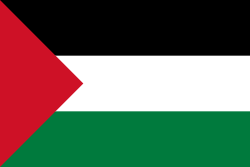
Back حملات التعريب البعثي في شمال العراق Arabic ھەڵمەتەکانی بەعەرەبکردنی حیزبی بەعس بۆ سەر باشووری کوردستان CKB מסעות השיערוב של הבעת' בצפון עיראק HE Erebkirina Başûrê Kurdistanê Kurdish Campanhas baathistas de arabização no norte do Iraque Portuguese
| Ba'athist Arabization campaigns in northern Iraq | |
|---|---|
| Part of Ba'athism, the Iraqi–Kurdish conflict, and the Persecution of Iraqi Turkmen in Ba'athist Iraq | |
 Map that includes the present Kurdistan Region of Iraq and roughly defines so called "disputed territories" | |
| Location | Ba'athist Iraq |
| Date | 1968–2003 |
| Target | Mainly Kurds, but also Turkmen, Yazidis, Assyrians, Shabaks, Armenians. |
Attack type | Demographic engineering via ethnic cleansing |
| Deaths | 2,500[1] to 12,500[1][2] |
| Victims | 2,000,000+ (incl. refugees)[2] |
| Perpetrator | |
| Motive | Arab nationalism and pan-Arabism |
| Part of a series on |
| Ba'athism |
|---|
 |
Between 1968 and 2003, the ruling Arab Socialist Ba'ath Party of the Iraqi Republic perpetrated multiple campaigns of demographic engineering against the country's non-Arabs. While Arabs constitute the majority of Iraq's population as a whole, they are not the majority in all parts of northern Iraq. In an attempt to Arabize the north, the Iraqi government pursued a policy of ethnic cleansing, killing and forcefully displacing a large number of Iraqi minorities—predominantly Kurds, but also Turkmen, Yazidis, Assyrians, Shabaks and Armenians, among others—and subsequently allotting the cleared land to Arab settlers.[3][4][5][6][7] In 1978 and 1979 alone, 600 Kurdish villages were burned down and around 200,000 Kurds were deported to other parts of Iraq.[2]
As a part of the Iraqi–Kurdish conflict, the campaigns represent a major chapter of the historical ethno-cultural friction between Arabs and Kurds in the Middle East. Rooted in the doctrines of Ba'athism, the Iraqi government policy that served as the basis of these campaigns has been referred to as an example of internal colonialism—more specifically described by Ghanaian-Canadian scholar Francis Kofi Abiew as a "colonial 'Arabization' program" consisting of large-scale deportations of Kurds and forced Arab settlement within the country.[8][9]
- ^ a b Routine calculations do not count as original research, provided there is consensus among editors that the result of the calculation is obvious, correct, and a meaningful reflection of the sources. Basic arithmetic, such as adding numbers, converting units, or calculating a person's age are some examples of routine calculations. See also Category:Conversion templates.
https://www.hawaii.edu/powerkills/SOD.TAB14.1C.GIF row 1313 and 1314
1,000,000 and 10,000 to 2,000,000 and 100,000 Kurds were displaced and killed respectively between 1963 and 1987; 250,000 of them in 1977 and 1978. If deaths are proportional to the displacement then 2,500 to 12,500 Kurds would have died during this period depending on the scale of overall displacement and deaths used. - ^ a b c Farouk-Sluglett, M.; Sluglett, P.; Stork, J. (July–September 1984). "Not Quite Armageddon: Impact of the War on Iraq". MERIP Reports: 24.
- ^ Kelly, Michael J. (30 October 2008). "1. Kurdistan". Ghosts of Halabja: Saddam Hussein and the Kurdish Genocide: Saddam Hussein and the Kurdish Genocide. ABC-CLIO. ISBN 978-0-313-08378-5.
- ^ "Introduction : GENOCIDE IN IRAQ: The Anfal Campaign Against the Kurds (Human Rights Watch Report, 1993)". www.hrw.org. Retrieved 11 February 2024.
- ^ "Claims in Conflict: Reversing Ethnic Cleansing in Northern Iraq: III. Background". www.hrw.org. Retrieved 11 February 2024.
- ^ Malazada, Ibrahim Sadiq. "Genocide as a state-building model in Iraq". cfri-irak.com. Retrieved 11 February 2024.
- ^ "Iraq: In Kurdistan, Land Disputes Fuel Unrest | Human Rights Watch". 2 August 2004. Retrieved 11 February 2024.
- ^ Francis Kofi Abiew (1991). The Evolution of the Doctrine and Practice of Humanitarian Intervention. p. 146.
- ^ Rimki Basu (2012). International Politics: Concepts, Theories and Issues. p. 103.